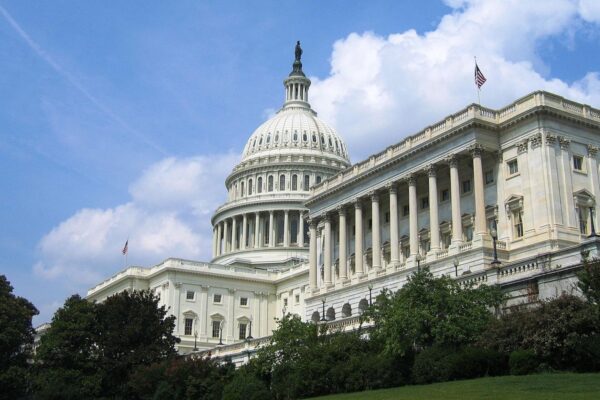The U.S. Treasury Department has just issued its annual “Financial Report of the United States Government” for its past fiscal year. In contrast to the annual financial reports of state and local governments, it is remarkably forthright, explicitly asserting in both text and charts why the federal government will not be fiscally sustainable over the next 75 years. Yet it is missing one financial statement that is required of state and local governments — a comparison of actual to budgeted revenues and expenses.
Although a mandate to provide such a statement may appear to be nothing more than a technical accounting enhancement, it could, in fact, be a key means of imposing federal fiscal discipline — holding Congress and the president accountable for the outcomes of their policy decisions.
The reason for such omission may be surprising to all but aficionados of the federal budgetary and accounting systems. But it is nevertheless straightforward. Congress does not pass, and the president does not sign, an actual budget as the term is commonly used — that is, one that sets forth estimated revenues and expenses.
In federal parlance, “budget” is used in multiple ways. Most prominently it refers to the proposals that the president submits to Congress and what is titled “Budget of the United States Government.” Comprehensive and exceedingly detailed, it sets forth both projected and proposed revenues and expenses for the coming year. Nevertheless, it is little more than the president’s fiscal wish list and typically is dead on arrival at the Capitol.
Notably too, the Treasury Department issues monthly reports of actual federal receipts and disbursements. It terms these receipts budgeted receipts and disbursements, and when summed for the entire year, the difference between the receipts and disbursements is referred to as the budget surplus or deficit. Whereas in conventional usage budgeted receipts and disbursements are those expected to be collected or paid in the future, as used in Treasury reports, they are those actually collected or made in the past.
Rather than pass a “real” budget, Congress initially adopts a budget resolution that is intended to provide guidance to its various committees. A nonbinding agreement, which unlike a law does not go to the president for signature, it sets forth in the broadest terms what the federal government expects to take in as revenues and the maximum amounts that its committees should appropriate for spending. Following the adoption of this resolution and consideration of spending bills recommended by various House and Senate committees, Congress enacts several (currently 12) appropriation measures.
The failure to adopt an all-inclusive budget means that in any given year, Congress controls only a small portion of total revenues and expenses. Most conspicuously, Congress does not explicitly vote on either revenues or expenses that are dictated by previously enacted laws that remain in effect until changed.
On the revenue side of the ledger, almost all federal tax collections fall into this category. Similarly, on the expenditure side approximately two-thirds of outlays are not covered by annual appropriations. These are mainly entitlement programs such as Social Security, Medicare, Medicaid, SNAP and military and civilian employee retirement benefits. Also on autopilot is the ever-increasing interest on the federal debt.
Worse, owing to the opportunity to make “supplemental” midyear appropriations, Congress may opt not to initially appropriate funds for costs almost certain to be incurred in the coming year. Thus, by some estimates, 70% of the Iraq and Afghanistan wars between 2003 and 2008 was funded by supplemental or “emergency” appropriations.
The consequence of not having to adopt a budget that includes all revenues and expenses and will allow for actual-to-budget comparisons is that Congress is not held accountable for deficits (or surpluses) that differ markedly from what was promised. For example, regardless of whether they intend to or not, lawmakers can misestimate the impact of new entitlements or changes in tax provisions. A budget, accompanied by an end-of-year actual-to-budget comparison would, at the very least, spotlight — and demand explanations of — differences between what Congress promises and what it delivers.
A budget is important for another reason as well. Federal fiscal policy has a major impact on the U.S. economy. Those disbursements and receipts that are not included in the current year appropriation measures or revenue bills will be incorporated into the actual year-end surplus and deficit — and thereby affect the economy — as much as those that are. All of this is ultimately within the control of Congress.
Make no mistake. Over the years, Congress has imposed numerous rules and procedures to control spending — the 1985 Balanced Budget and Emergency Deficit Control Act and various forms of PAYGO to cite but two. And we know how those turned out. A budget may not be a panacea, but it is a step in the right direction.
Nearly all governments in our country, from the smallest of villages to the largest of states, adopt budgets and prepare year-end actual-to-budget comparisons. We should expect no less from the federal government.
Michael H. Granof is professor emeritus of accounting at The University of Texas at Austin. He recently completed a 10-year term as a member of the Federal Accounting Standards Advisory Board, the board that establishes accounting standards for the federal government.
A version of this op-ed appeared in The Hill.




